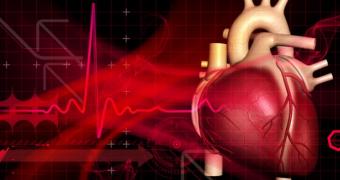Thanks to a team of researchers working with the Cedars-Sinai Heart Institute, people whose heartbeats are anything but regular might soon gain access to a new form of biological therapy.
Thus, specialists now claim that a gene scientifically referred to as Tbx18 can successfully turn run-off-the-mill heart cells into so-called biological pacemakers. This means that, with the help of this breakthrough, electronic pacemakers might soon become obsolete.
Newswise explains that a human heart is made up of roughly 10 billion cells, but that 10,000 of these are pacemaker cells.
However, with the help of the Tbx18 gene, it is possible to create more pacemaker cells, whose behavior is strikingly similar to the one displayed by the biological pacemakers which were already part and parcel of the heart's make-up.
Commenting on these findings, Hee Cheol Cho, PhD., made a case of how, “Although we and others have created primitive biological pacemakers before, this study is the first to show that a single gene can direct the conversion of heart muscle cells to genuine pacemaker cells.”
“The new cells generated electrical impulses spontaneously and were indistinguishable from native pacemaker cells,” this specialist went on to add.
In order to reprogram the ordinary heart muscle cells and turn them into pacemaker cells, the researchers had to resort to a laboratory-engineered virus whose main goal was that of transporting the gene into the base cells.
Seeing how both the laboratory tests and the experiments carried out with guinea pigs as part of this study proved quite fruitful, the Cedars-Sinai specialists hope that soon enough this biological therapy will be made available to human patients.
From where they stand, individuals suffering with erratic heartbeats could someday have either the Tbx18 gene injected straight into their heart, or laboratory-made pacemaker cells transplanted into the blood-pumping organ.
“This is the culmination of 10 years of work in our laboratory to build a biological pacemaker as an alternative to electronic pacing devices,” stated Eduardo Marbán, MD, PhD.

 14 DAY TRIAL //
14 DAY TRIAL //